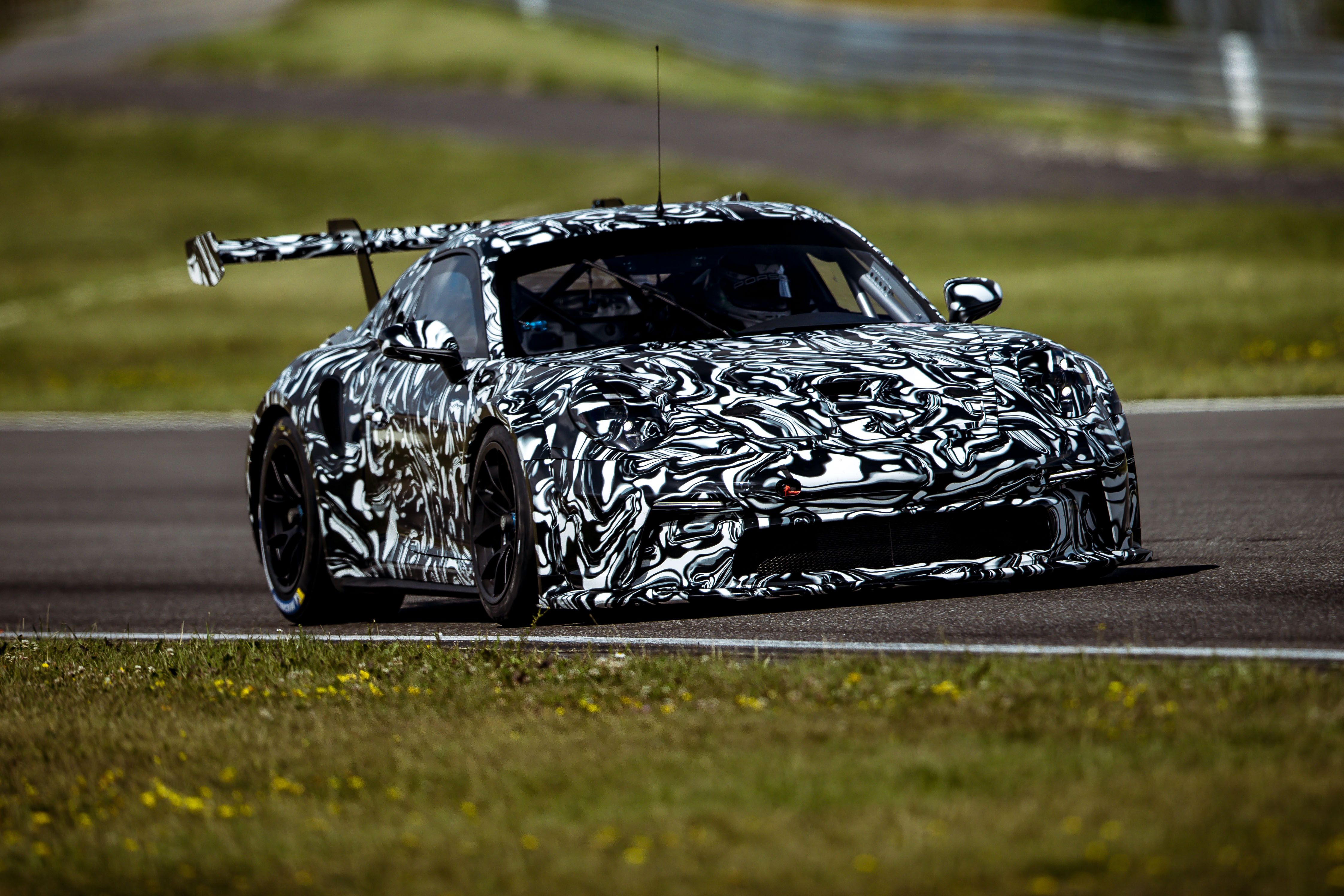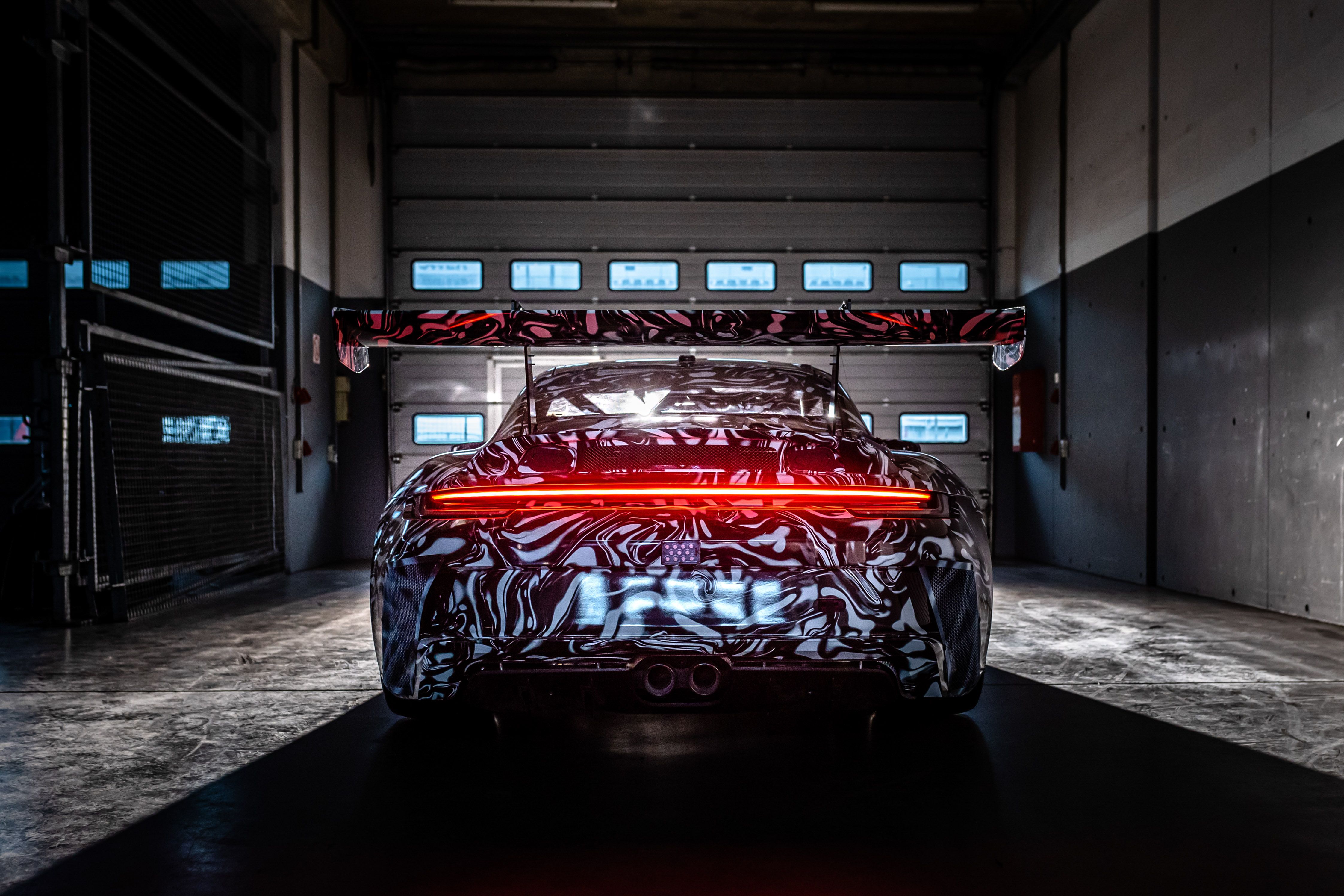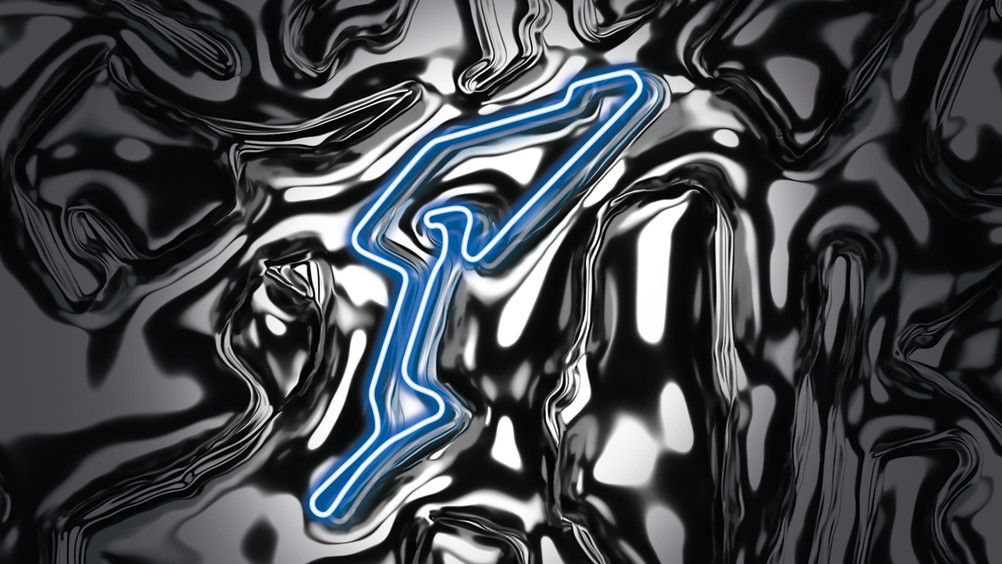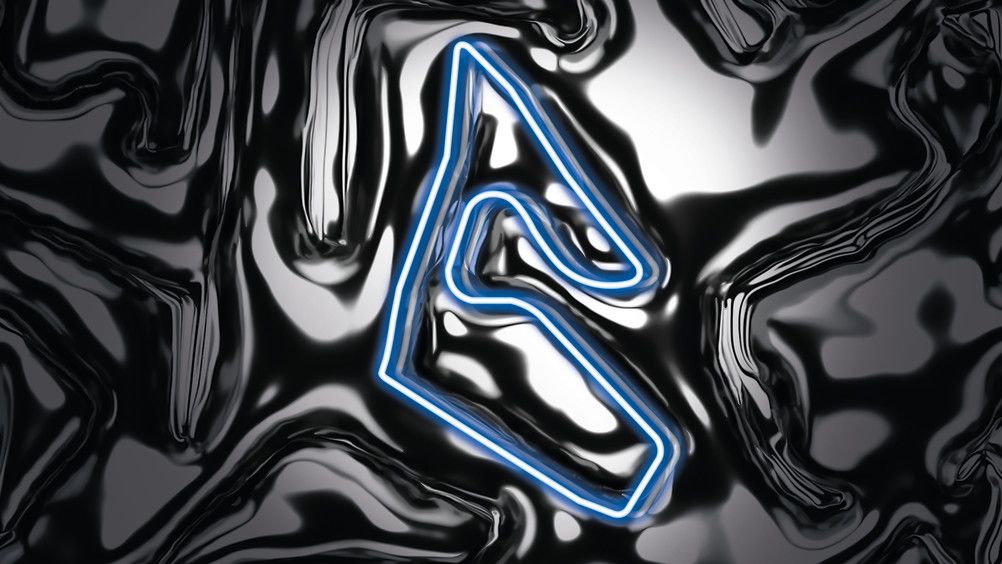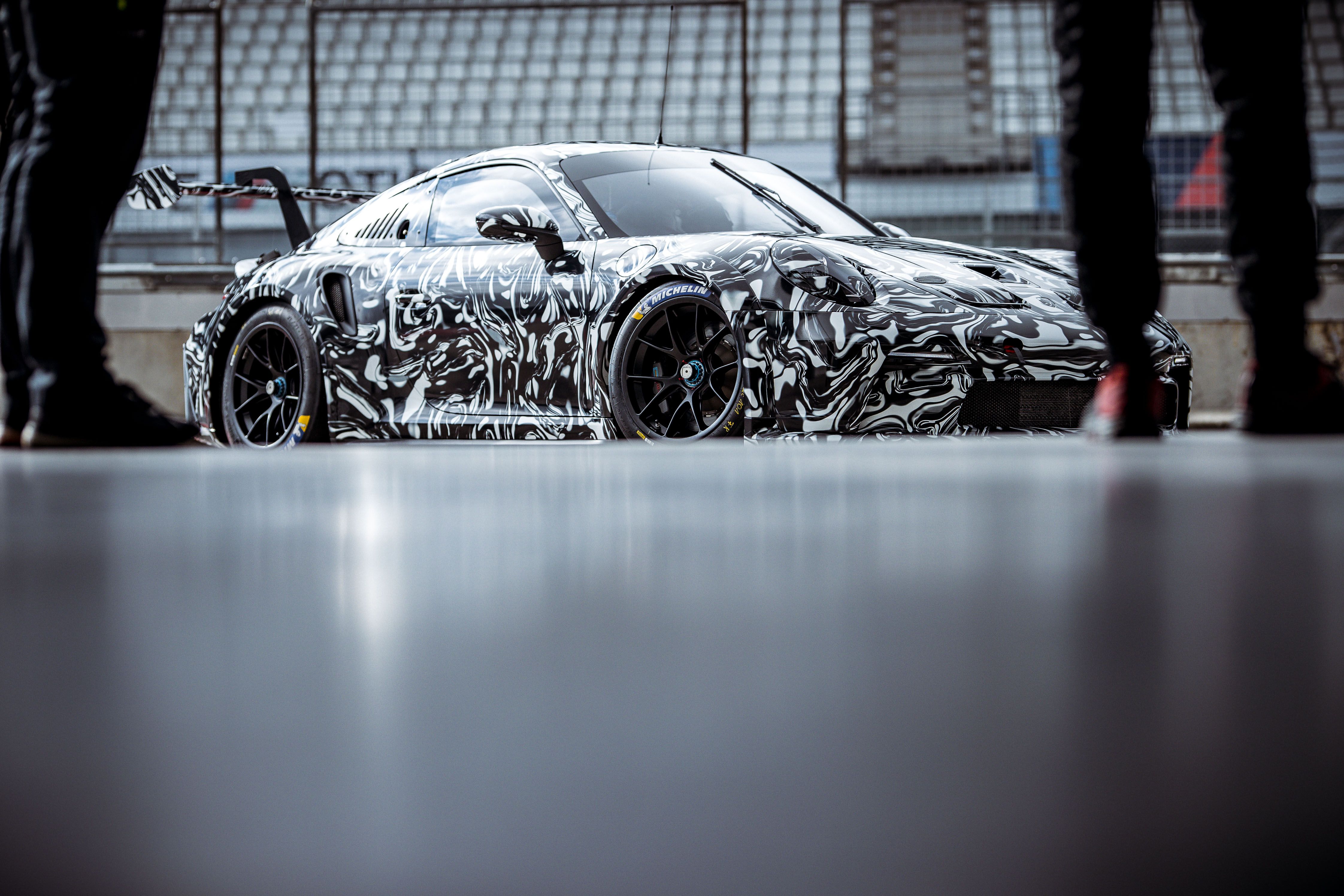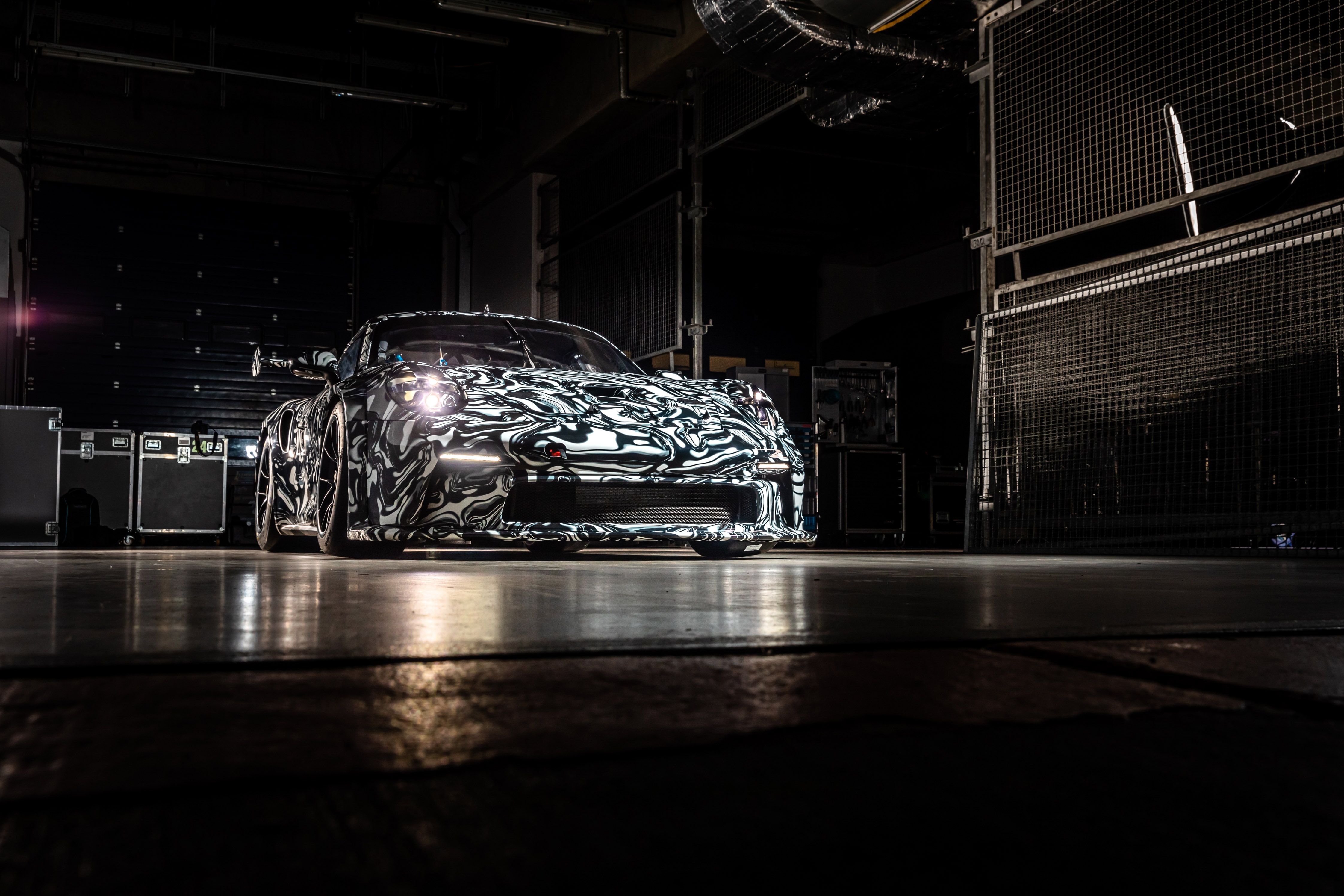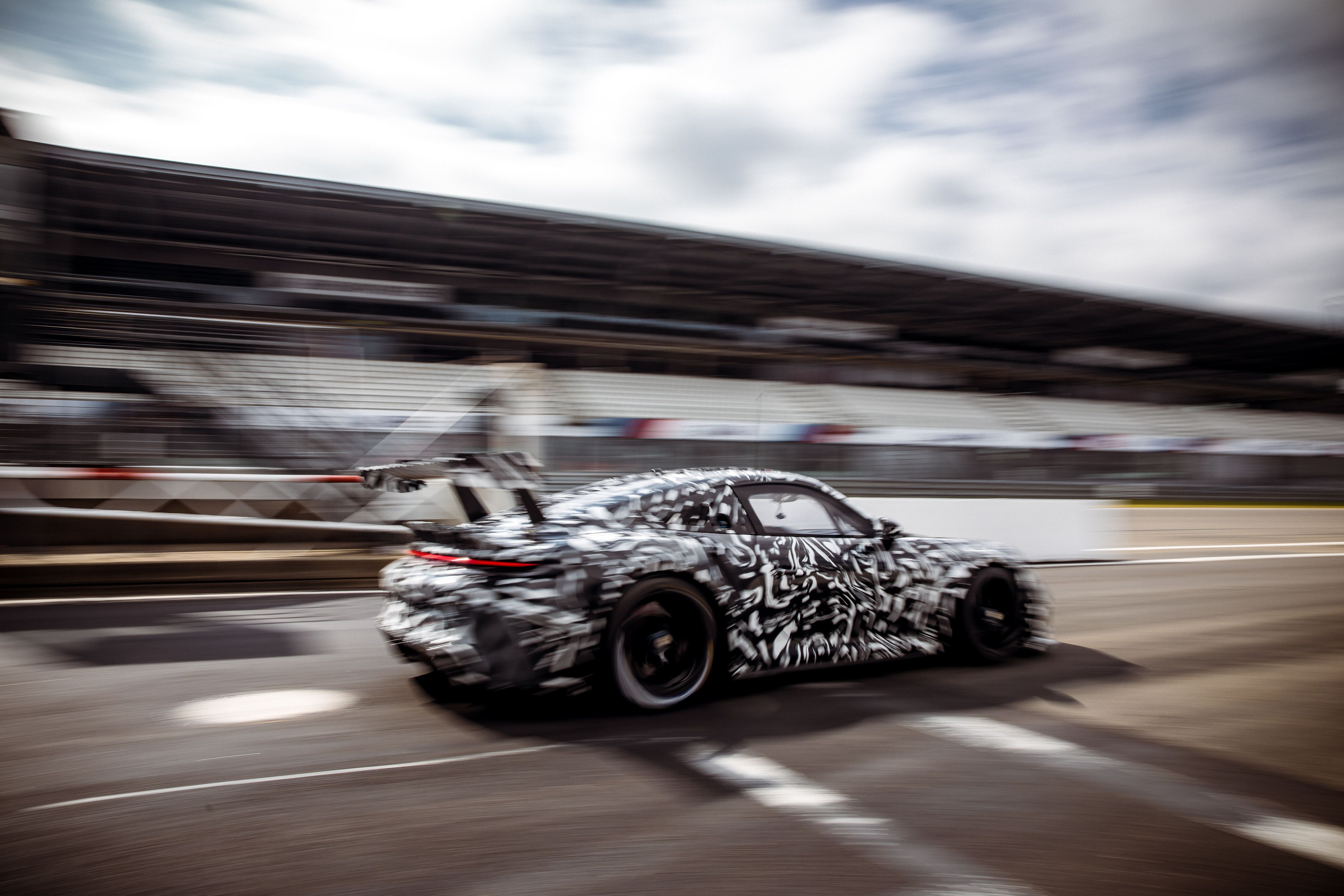Porsche is about to launch the first race car based on the 992-generation 911. It's called the 911 GT3 Cup and will be raced in the company's already iconic and popular one-make series. The latest 911 GT3 Cup is still being tested, so Porsche is only showing us a camouflaged version. But while the car may appear wrapped in the usual swirly camo seen on most prototypes out there, it actually hides abstract maps of the race track on which the one-series is held.
The new Porsche 911 GT3 Cup is seemingly based on the previous RSR
The swirly camo prevents us from seeing the important bits, but it appears that the GT3 Cup model borrows from the outgoing RSR version. It features a highly aerodynamic front bumper with a big center vent and a long splitter, while the nose also sports a sizable intake. Although it shares the "GT3" badge with the road model, it doesn't feature the nostrils seen in recent spy shots.
Toward the back, the GT3 Cup borrows from the Turbo model in the form of cooling vents mounted in the rear fenders. We can also see louvered quarter windows and reshaped side skirts. Of course, the wheels are much wider than the regular 911 GT3.
The rear features the already familiar lightbar and integrated spoiler, but the wing is larger than the road-going 911 GT3. It also sports a more conventional shape for race cars instead of the goose neck posts seen in the GT3. Finally, the rear bumper is wider than usual and features big vents onto the sides, plus a more aggressive diffuser in the center.
The swirly camouflage hides maps of iconic race tracks
The camouflage cover of the new Porsche 911 GT3 Cup features abstract versions of the race tracks on which the Porsche one-make is held. It takes a while to identify them, but you'll find a few upon close inspection. Porsche actually posted a quiz on its motorsport page, where you can see the layouts of six race tracks. The 2021 season will include eight and they should all be in there.
The calendar will include Circuit de Monaco (Monte Carlo), Circuit Paul Ricard (France), Red Bull Ring (Austria), Silverstone (England), Hungaroring (Hungary), Spa-Francorchamps (Belgium), Zandvoor (Netherlands), and Monza (Italiy). However, the livery also includes maps of the Nurburgring and Le Mans.
On top of the one-make series called Mobil 1 Supercup, the 911 GT3 Cup will also be eligible for selected national Carrera Cup events.
The Porsche 911 GT3 Cup will remain naturally aspirated
Porsche has yet to disclose details, but 911 Cup cars have been using naturally aspirated engines since the competition was established in the early 1990s. The new race car should retain the same layout and will most likely feature the 4.0-liter flat-six of its predecessor. The engine will incorporate some upgrades, but power should remain similar.
The flat-six will mate to a six-speed sequential gearbox, as before.
The new Porsche 911 GT3 Cup is the ninth-generation Cup car
The 911 Cup car was first introduced in 1990 and it was based on the 964-generation 911. It was replaced by the 911 Cup 3.8, based on the 993-generation 911, in 1994. The latter remain on the track through 1997. Starting 1998, Porsche adopted the GT3 Cup name for the race car and update it with each generation redesign and facelift operated for the road-going 911. The 996 model raced from 1998 to 2001, while the upgraded 996 II version entered races from 2002 to 2004. The 997-based GT3 Cup was used from 2005 to 2012 with an updated model launched for 2020. The 991-gen GT3 Cup surfaced in 2013, was updated in 2017, and raced through 2020.
Throughout its entire life, the 911 Cup car shared its engine with the road-going GT3, so displacement gradually increased from 3.6 liters in 1990 to 4.0 liters in 2017. Output also grew with each generation. While the first 911 Cup was rated at 271 horsepower and 232 pound-feet of torque, the latest GT3 Cup came with 479 and 354 pound-feet of twist on tap.
Since 1990, Porsche has built 4,251 units of the one-make race car. The latest GT3 Cup was by far the most successful, with 1,410 units built. 673 vehicles were based on the 991, while 737 shared the looks of the facelifted 991.2 model.


